I first decided to calculate my guide services’ carbon footprint for 2019 and achieved carbon neutrality, but in order to maintain my carbon neutral claim, I am continuing to calculate my carbon footprint. “With the gulf of Maine warming 99% faster than the rest of the world’s oceans (over the past 30 years), it was a no-brainer for me to join the FFCA. We’re seeing changes in our fisheries as a result of climate change on a daily basis. My business and passion for fly fishing revolves around well managed fish stocks and a healthy planet; it’s my duty to help however I can and to minimize the impact that my business has on the environment.”
Carbon Neutral is defined by the World Resources Institute as “annual zero net anthropogenic (human caused or influenced CO2 emissions by a certain date. By definition, carbon neutrality means every ton of anthropogenic CO2 emitted is compensated with an equivalent amount of CO2 removed (e.g. via carbon sequestration)….”
Methodology
Soul Fly Outfitters Carbon Footprint is based in the GHG Protocol Corporate Accounting Standard and is created as a reference for what we are including in your Carbon Footprint, which provides you with relevant, complete, consistent, transparent and accurate GHG inventory.
Spend-based method – Estimate emissions for goods and services by collecting data on the economic value of goods and services purchased and multiplying it by relevant secondary (e.g., industry average) emission factors (e.g., average emissions per monetary value of goods).
Organizational Boundary: We are taking a financial control approach, which assumes that your business has financial control over its operations and the ability to direct the financial and operating policies over these activities.
Operational Boundary: In order to set our operational boundaries, we must report our Scope 1 (direct emissions) and Scope 2 (indirect emissions) and are voluntarily reporting our Scope 3 (indirect emissions). For more information on see table below:
My Carbon Footprint
Below is a summary of my 2020 carbon footprint:
SCOPE 1 GHG Emissions: 7.8 mtCO2e
SCOPE 2 GHG Emissions: 0.1 mtCO2e
SCOPE 3 GHG Emissions: 4.2 mtCO2e
1.1 Heating: 2020 was a strange year due to COVID, so my guiding season was June-October for stripers. I stayed in my camper and used power from a friend’s farm so did not account for heating.
1.2 Mobile Sources: I accounted for the gasoline I burned for my skiff, which is controlled by my company.
2.1 Electricity: I estimated my electricity consumption to account for my purchased electricity.
3.1 Product Embodied Carbon: I accounted for the embodied carbon of the new fly lines and SIMMS Gear that I used for my 2020 guiding season.
3.2 Capital Goods: Not applicable.
3.3 Fuel & Energy Related Activities: I accounted for (estimated) the travel of my clients who came to fish with me.
3.4 Inbound Shipments: Not material.
3.5 Waste Generated in Operations: Because I Kick Plastic in my guiding operation, the only waste generated is really food wrappers, packaging from products used and some recycled beer cans, all of which is a very small amount and not material.
3.6 Business Travel: 2020 was a weird travel year due to COVID, so I did not have any business travel in 2020.
3.7 Employee Commuting: I did account for the miles travelled from my camper to the boat ramp.
3.9 Shipments to Customers: Not applicable.
That said, in following the GHG Protocol Corporate Standard, we did not include some of the recommended categories because they were deemed not applicable, such as: capital goods, upstream leased assets and end-of-life of sold products.
How I Achieved Carbon Neutrality
Before I explain how I went carbon neutral (again!), I feel it’s also important to define carbon offsets:
Carbon Offsets: “An offset project is “a specific activity or set of activities intended to reduce GHG emissions, increase the storage of carbon, or enhance GHG removals from the atmosphere.” The project must be deemed additional; the resulting emissions reductions must be real, permanent, and verified; and credits (i.e, offsets) issued for verified emissions reductions must be enforceable.”
So, you are probably wondering, how did we go carbon neutral if our carbon footprint is 12.1 mtCO2e? In short, I purchased carbon offsets for our Scope 1, 2 & 3. I decided to purchase offsets from multiple projects around the world to increase our impact through choosing offsets that reduce greenhouse gas emissions, sequester carbon and protect wildlife through the nonprofit, Cool Effect. All of the carbon offset projects we selected reduce GHG emissions, are additional, are verified and permanent. I purchased carbon offsets from a project in Colorado, called Home on the Range. Below is an example of how the carbon offset project I purchased reduce greenhouse gas emissions:
Home on the Range: “This project protects native grasslands across the Great Plains. By protecting this land from conversion to agriculture, millions of tonnes of CO2 are stored in the grass and the soil.”
While I am thrilled to have taken this critical step to better understand Soul Fly Outfitter’s carbon footprint, now the real work begins. I understand that the most important thing I can do as a business is to reduce my carbon footprint. I also know that carbon offsets are not the perfect solution, but feel strongly that we need lots of imperfect solutions if we are going to win the battle against climate change. I am simply just trying to do my part as a beneficiary of the resource.
Follow me on my sustainability journey as I strive to reduce my carbon footprint to protect what I love!
Soul Fly Outfitters 2020 Carbon Footprint calculated with the Fly Fishing Climate Alliance Carbon Measurement Tool and the Report was produced by Emerger Strategies.


